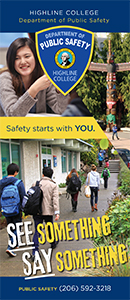Opioid Education and Overdose Response
What are Opioids?
Opioid drugs are important medications for the treatment of pain and terminal illness since these drugs work by blocking the your brain’s sensation of pain. Unfortunately, these drugs have the potential to produce physical dependence, abuse, and addiction. Opioid drugs include heroin as well as medications available by prescription such as oxycodone, methadone, morphine, codeine, hydrocodone, fentanyl, and hydromorphone.
Opioid Overdose
According to the Center for Disease Control (CDC), in 2022, nearly 108,000 people died from drug overdoses, which equates to 296 overdoses each day. More than 3 out of 5 overdose deaths had at least one potential opportunity to link people to care before the fatal overdose or to implement life-saving actions when the fatal overdose occurred.
During an overdose, breathing can be dangerously slowed or stopped, causing brain damage or death.
Signs of overdose include:
-
- Small, constricted “pinpoint pupils”
- Falling asleep or loss of consciousness
- Slow, shallow breathing
- Choking or gurgling sounds
- Limp body, cold or clammy skin
- Pale, blue, or cold skin
Overdose response
1. Call 911 if the person is unresponsive and showing other symptoms listed above.
2. Give Naloxone. Administer naloxone every 2-3 minutes until their breath returns to normal (normal = one breath every 3-5 seconds). It is safe to give naloxone to someone, even if you aren’t sure they took opioids.
Watch and learn how to respond to an opioid overdose and administer naloxone:
Fentanyl Information and Overdose
Fentanyl is a strong, synthetic opioid that can be prescribed by a practitioner or obtained from unregulated sources when it is made illicitly. In some cases, fentanyl is also mixed with other illicit drugs, such as cocaine or methamphetamine. A person using that drug may not know they are also taking fentanyl or how much fentanyl they are taking. Fentanyl is now common in the illicit drug supply, and in recent years has become more common than heroin. Synthetic opioids, primarily illicitly manufactured fentanyl, are involved in most drug overdose deaths in the U.S.
Campus Resources
In 2024, the state legislature approved HB 2112 to help prevent opioid overdoses in Washington state. Among other things, the legislation requires colleges and universities to give free naloxone and fentanyl test strips to students.
Narcan (Naloxone): Narcan is a medicine that temporarily stops the effect of opioids. This helps a person start to breathe again and wake up from an opioid overdose. Narcan (also known as the generic medicine name of Naloxone) is sold as a nasal spray that’s easy to administer. You should always contact 9-1-1 if you suspect someone is overdosing.
Fentanyl Test Strips: Fentanyl test strips (FTS) are small strips of paper that can detect the presence of fentanyl in different kinds of drugs and drug forms (pills, powder, and injectables. Test strips can tell you if your drugs contain fentanyl but not how much fentanyl there is or how strong it is.
Within the Campus View resident hall lobby, a dispenser for free Narcan and fentanyl strips has been made available for students.
The college is also working towards providing additional Narcan and test strips in buildings accessible to students. Information will be updated as our efforts progress.
See below for an instructional video on how to use a fentanyl test strip:
Good Samaritan Law
Washington State law (RCW 69.50.315) states that “a person acting in good faith who seeks medical assistance for someone experiencing a drug-related overdose shall not be charged or prosecuted for possession of a controlled substance pursuant to RCW 69.50.4013, or penalized under RCW 69.50.4014, if the evidence for the charge of possession of a controlled substance was obtained as a result of the person seeking medical assistance.”
Additionally, a person who is experiencing a drug-related overdose will not be charged for possession of a controlled substance if the evidence for the charge is found during the medical response (RCW 69.50.315).


